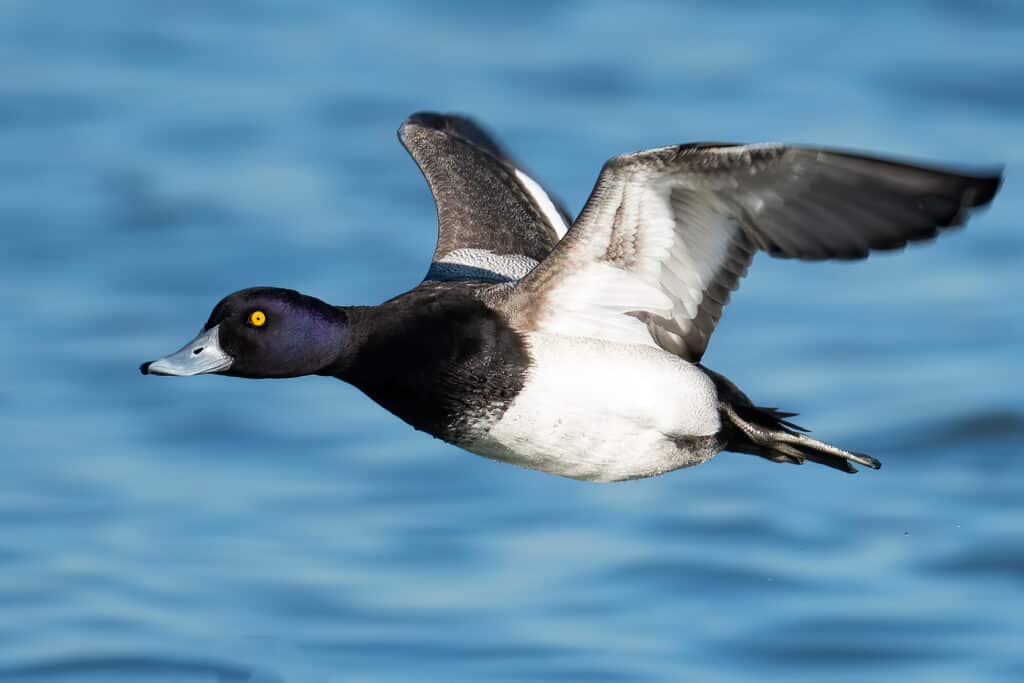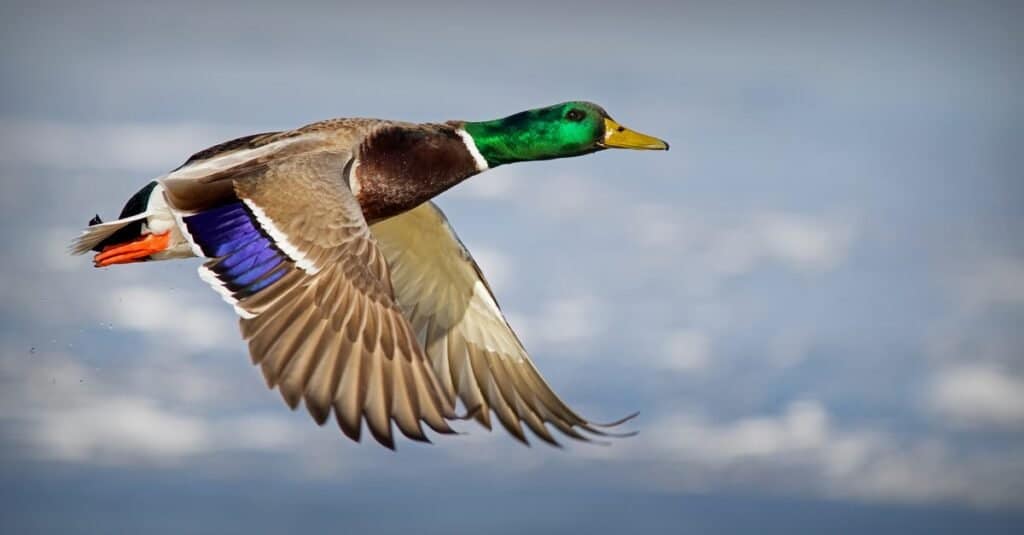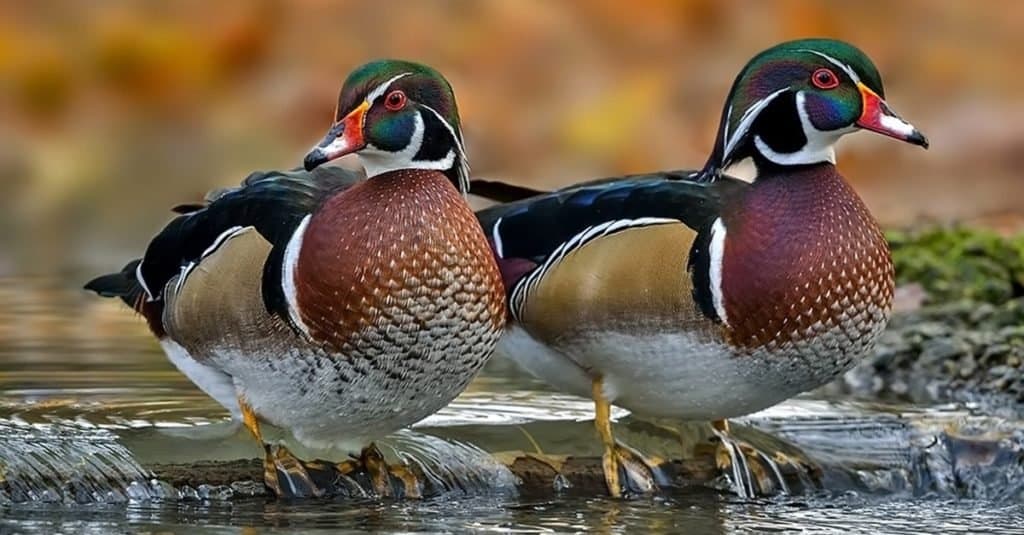Duck hunting season in Tennessee should be on any waterfowl hunter’s to-do list. Thanks to its mix of wetlands, rivers, and lakes, as well as its proximity to the Mississippi River migratory flyway, the state of Tennessee is home to an impressive assortment of duck species. This includes dabbling ducks (ducks that feed on the surface of the water or dip their heads below the surface), diving ducks (these birds dive under the water to search for food), and even sea ducks (they spend extensive time at sea). Mallards, wood ducks, and common mergansers are permanent residents of the state, while other species migrate in for the winter.
For hunters, this means lots of opportunities for bagging your daily limit.

Open season: the scaup is among the waterfowl that can be hunted during duck season in Tennessee.
©Brian E. Kushner/Shutterstock.com
Can You Duck Hunt in Tennessee?
Waterfowl hunters in Tennessee must possess a general hunting/fishing license as well as a waterfowl supplemental license, a migratory bird permit, and a federal duck stamp. Separate licenses are available for children and non-residents, as are licenses that combine waterfowl and other hunting types. Resident owners of farmlands are permitted to hunt and fish there without permits, in season.
When Does Duck Hunting Season in Tennessee Begin?
In Tennessee, duck season is divided into different categories. Specific dates for teal and wood duck hunting are designated in September. For general duck hunting, Phase One is the post-Thanksgiving weekend, while Phase 2 begins in December and runs through the end of January. In addition, special days are open in February for young hunters (age 6-16, must be accompanied by an adult) and veterans and active duty military personnel. Here’s how the dates fall in the 23/24 season:
| Wood duck and teal | Sep. 9-13, 2023 |
| Teal only | Sep. 14-17, 2023 |
| Phase 1 | Nov. 25-26, 2023 |
| Phase 2 | Dec. 5, 2023-Jan 31 2024 |
| Youth Only | Feb. 3 and 10, 2024 |
| Veterans and Military Only | Feb. 4 and 11, 2024 |
Where Can You Hunt Ducks in Tennessee?

Some of Tennessee’s public land sites permit the use of permanent or temporary blinds during duck hunting season.
©Brian N Rogers/Shutterstock.com
The state of Tennessee hosts 7,000 acres of public land available for hunting, waterfowl included. Duck hunters can opt for Tier 1 or Tier two locations, which require permits awarded through a lottery system, or Tier 4 locations, no permit required. Permanent blinds are only allowed on Tier 1 and Tier 2 sites.
Duck hunting on private land is permitted with the permission of the landowner.
Tennessee Bag and Possession Limits
The daily bag limit during duck hunting season in Tennessee is 6 birds/day, with the following restrictions:
No more than 4 mallards, with no more than of them 2 female.
No more than 3 wood ducks, 1 pintail, 2 canvasbacks, 2 redheads, 2 black ducks, or 1 mottled duck.
Other waterfall daily bag limits:
For scaup: The bag limit is 1 scaup on November 26, November 27, and December 5 through December 17. Then the limit is 2 scaup from December 18 through January 31.
For mergansers: 5 birds/day, only 2 of which may be hooded mergansers.
For coots: The daily bag limit for coots is 15 birds/day.
Where are the Best Places to Duck Hunt in Tennessee?
Located in the northwest corner of the state, Reelfoot Lake State Park is one of Tennessee’s hottest duck hunting spots. It’s a must-visit for any Tennessee duck-hunting excursion.
Meet the Species: 3 of the Most Common Ducks in Tennessee
According to data from the U.S. Fish and Wildlife Service, the top three most commonly-hunted ducks in Tennessee are the mallard, the wood duck, and the gadwall.

Duck! The male mallard is hard to miss.
©Jeffry Weymier/Shutterstock.com
Mallards: Thanks to the male’s distinctive green head, yellow bill, and white collar, the mallard is a familiar wild duck that’s also one of the most abundant ducks on earth. They’re also the ancestor species of most domestic ducks. You’ll find mallards in watery places of all sorts, from rivers, ponds, and lakes to swamps and city parks. Mallards are dabbling ducks, which means they dip their heads under the water to eat plant material, insects, worms, crustaceans, and even frogs and small fish. On land, they’ll forage for grass, acorns, seeds, and roots.

Wood ducks are bouncing back after a threat of extinction.
©Bappa Pabitra/Shutterstock.com
Wood ducks: A true comeback story, the wood duck was facing extinction in the early 20th century. But conversation efforts have enabled this plucky duck to bounce back to healthy numbers. True to its name, the wood duck prefers bodies of water with woodland surroundings, whether a swamp, inland lake, or slow-moving river. They’ll even perch and nest in trees, a most unducklike behavior. Wood ducks mostly eat seeds and aquatic plants and have a real taste for acorns.

This male gadwall looks somewhat drab from a distance, but creep closer and you’ll see his intricate feather pattern.
©Rudmer Zwerver/Shutterstock.com
Gadwalls: These unassuming brown waterfowl like to feed with other ducks, usually dabbling for plant material, but occasionally diving. They rarely forage on land. Gadwalls favor the leaves and stems of the plants they eat, and will also munch on insects and crustaceans. They prefer open to forested land, and can be spotted in city parks as well as in ponds and marshes.
The photo featured at the top of this post is © CLP Media/Shutterstock.com
Thank you for reading! Have some feedback for us? Contact the AZ Animals editorial team.







